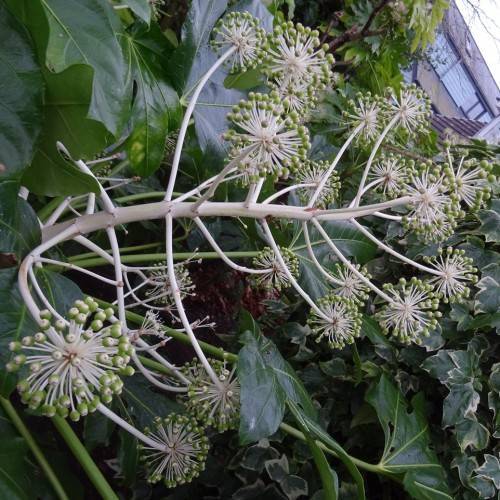
glossy-leaved paper plant
Fatsia japonica
Cycle:
Perennial
Watering:
Average
Hardiness Zone:
8 - 10
Flowers:
Flowers In Autumn
Sun:
Deep shade, Filtered shade, Part sun/part shade
Soil:
Well-drained
Fruits:
Fruits In Spring Ready In
Leaf:
Yes
Growth Rate:
Moderate
Maintenance:
Low
Drought Tolerant:
Yes
watering
Fatsia japonica plants appreciate evenly moist soil, but tend to be sensitive to too much or too little water. Generally, water them enough to keep the soil just slightly moist throughout the growing season, about once every 7-10 days. During hotter months, Fatsia japonica plants may require more frequent watering to stay hydrated, and may even need daily waterings if the air is particularly dry. In the winter, however, water your Fatsia japonica only when the soil begins to dry out. Overwatering can lead to yellowing leaves and root rot, so it’s best to err on the side of caution.
sunlight
Fatsia japonica, also known as glossy-leaved paper plant, prefers bright, indirect sunlight or partial shade. During the warm months of the year, it should be kept in a spot that receives no more than 2 to 3 hours of direct sunlight per day. During the cooler months of the year, it can tolerate a bit more direct sunlight, up to 4 or 5 hours per day. It is important to ensure that the plant is not exposed to direct sunlight in the middle of a hot day when the sun is highest in the sky. Positioning in east- or west-facing windows is ideal during these months.
pruning
Fatsia japonica, commonly known as glossy-leaved paper plant, should be pruned annually in the early spring. Pruning should be done conservatively, as this plant is slow-growing and does not tolerate heavy pruning. The objective of pruning is to selectively remove any dead or damaged foliage and branches, promote dense foliage, and control the shape and size of the plant. To accomplish this, main branches should be pruned back to 1-third of their previous length, and any dead or crossing branches should be removed. Avoid cutting back to bare wood, since this species has a tendency to die back to the ground when cut too drastically. Pruning can be done by hand or using pruning shears.
